The Critical Role of a Robust Staffing Backbone in Modern Projects
In today’s rapidly evolving business landscape, effective project staffing is more than just filling roles; it is about creating a smarter, more efficient infrastructure that drives project success, fosters workforce agility, and sustains long-term growth. Integrating innovative staffing strategies with advanced tools and methodologies ensures organizations are prepared to meet emerging challenges and capitalize on new opportunities.
The Strategic Importance of a Smarter Staffing Infrastructure
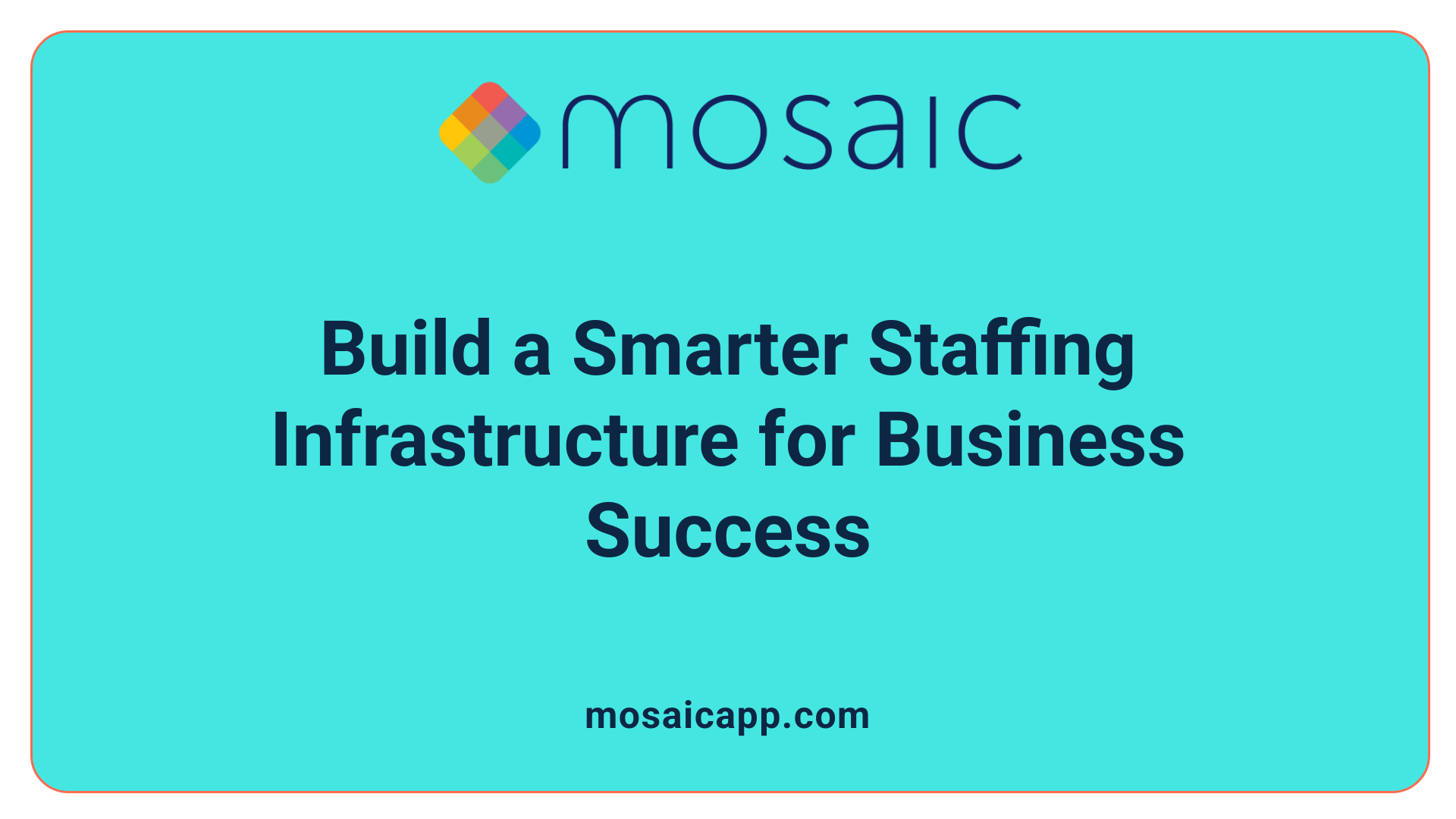
What is the importance of a smarter, more efficient infrastructure in project staffing?
A smarter, more efficient infrastructure in project staffing is vital for the success of any organization handling complex initiatives. When companies develop streamlined systems that incorporate specialized project managers with industry-specific expertise, they can significantly improve the quality and delivery of projects.
This advanced staffing approach helps organizations manage risks more effectively by enabling better planning, forecasting, and resource deployment. It also simplifies processes such as onboarding, monitoring, and evaluating team members, which accelerates project timelines and reduces costs.
By focusing on optimal resource allocation, businesses can boost productivity and ensure that each project has the right skill sets in the right roles. This targeted strategy supports handling challenging or high-stakes tasks, increasing the chances of project success.
Partnering with industry-specific staffing sources allows companies to access top talent quickly and reliably, further enhancing project outcomes. At its core, an intelligent staffing infrastructure not only facilitates project completion but also spurs economic development and community sustainability by fostering job creation and supporting local industry growth.
Effective project staffing infrastructure benefits extend beyond immediate project goals, influencing wider economic and social factors, including workforce development, regional prosperity, and environmental sustainability. Overall, investing in smarter staffing solutions empowers organizations to operate more efficiently, adapt to changing demands, and contribute positively to their communities.
Enhancing Project Success through a Smarter Staffing Backbone
How can adopting a smarter backbone in project staffing improve project success and workflow flexibility?
Implementing a more intelligent, structured approach to project staffing can significantly elevate project outcomes. Utilizing methodologies such as Agile or PRINCE2 provides a clear set of frameworks for organizing teams, setting goals, and monitoring progress. These systems foster enhanced communication, transparency, and proactive risk management, which are vital for delivering projects on time and staying within budget.
A well-defined framework improves stakeholder confidence by offering visibility into project stages, early detection of issues, and swift adjustments when necessary. This transparency reduces uncertainties and builds trust among clients and team members.
Furthermore, flexible staffing strategies play a crucial role. Temporary and specialized staff—like IT professionals or domain experts—can be brought in quickly to meet fluctuating project demands or fill skill gaps. This agility allows organizations to adapt seamlessly, avoid bottlenecks, and capitalize on niche expertise.
Standardizing processes and establishing effective knowledge transfer practices foster a culture of continuous improvement. These repeatable success patterns help teams recover swiftly from disruptions and maintain momentum.
Overall, a smarter staffing backbone blends systematic project management methodologies with adaptable human resource practices. This integration maximizes resource utilization, boosts operational efficiency, and significantly enhances the probability of project success, even in volatile or complex environments.
Methodologies Benefits Additional Details Agile Quick iterations, stakeholder feedback Ideal for flexible, changing project scopes PRINCE2 Structured control, clear roles Suitable for large, complex projects Standardized Processes Repeatability, consistency, knowledge transfer Supports continuous improvement and resilience
By combining these approaches with a strategic staffing plan, organizations can create a resilient, efficient, and adaptable project environment that promotes success and accelerates workflow adaptation.
Implementing Innovative Staffing Solutions: Strategies for Success
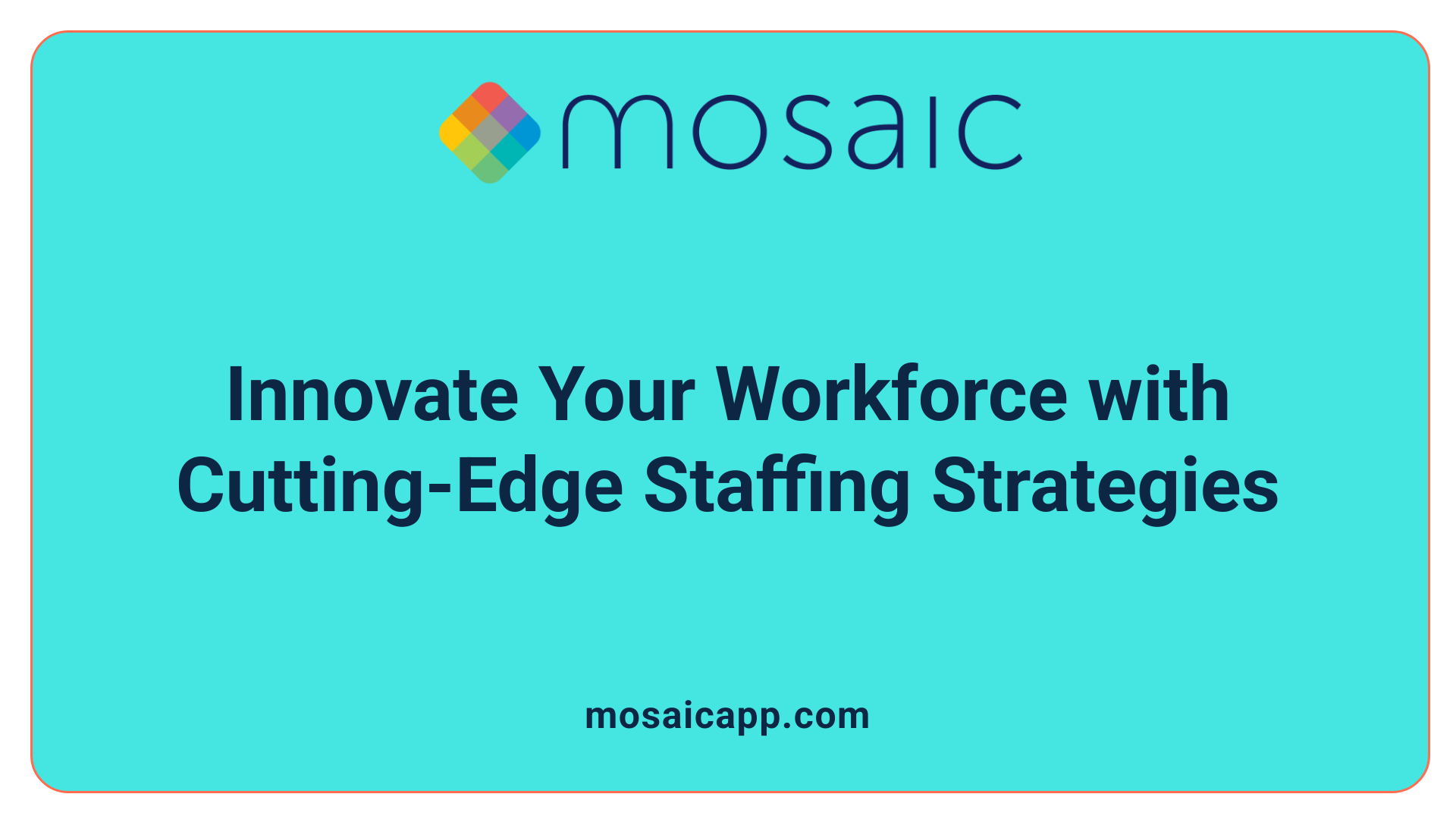
What strategies can organizations use to implement innovative staffing solutions such as outsourcing and temp-to-hire models?
To effectively adopt modern staffing models, organizations should consider a hybrid approach that blends various methods like outsourcing, staff augmentation, and flexible staffing. This allows companies to scale their workforce up or down in response to project needs without long-term commitments. Collaborating with reputable staffing ai ensures access to pre-vetted, specialized talent suited for specific tasks or projects.
Clear goal setting is vital. Organizations need to identify the precise skills required, project timelines, and budget constraints. Working closely with staffing partners facilitates better alignment and understanding of expectations, whether the goal is temporary staffing, a trial period leading to permanent hire, or specialized consultancy work.
Structured contracts are essential to define service scope, performance metrics, and legal obligations upfront. Regular performance reviews and engagement monitoring help ensure the workforce meets quality standards and adapts as project demands evolve. Maintaining open lines of communication between management and staffing providers fosters transparency and swift issue resolution.
Legal compliance, such as adhering to labor laws and employment regulations, must be a priority. Partnering with experienced staffing firms can mitigate legal risks by handling background checks, payroll, and compliance documentation.
Employing these strategies offers numerous benefits—greater flexibility to respond to market changes, access to niche skills, and cost savings. Ultimately, a strategic blend of these practices creates a resilient, efficient, and adaptable workforce aligned with organizational goals, enabling businesses to remain competitive and agile in a rapidly changing environment.
The Long-term Value of Professional Staffing Strategies
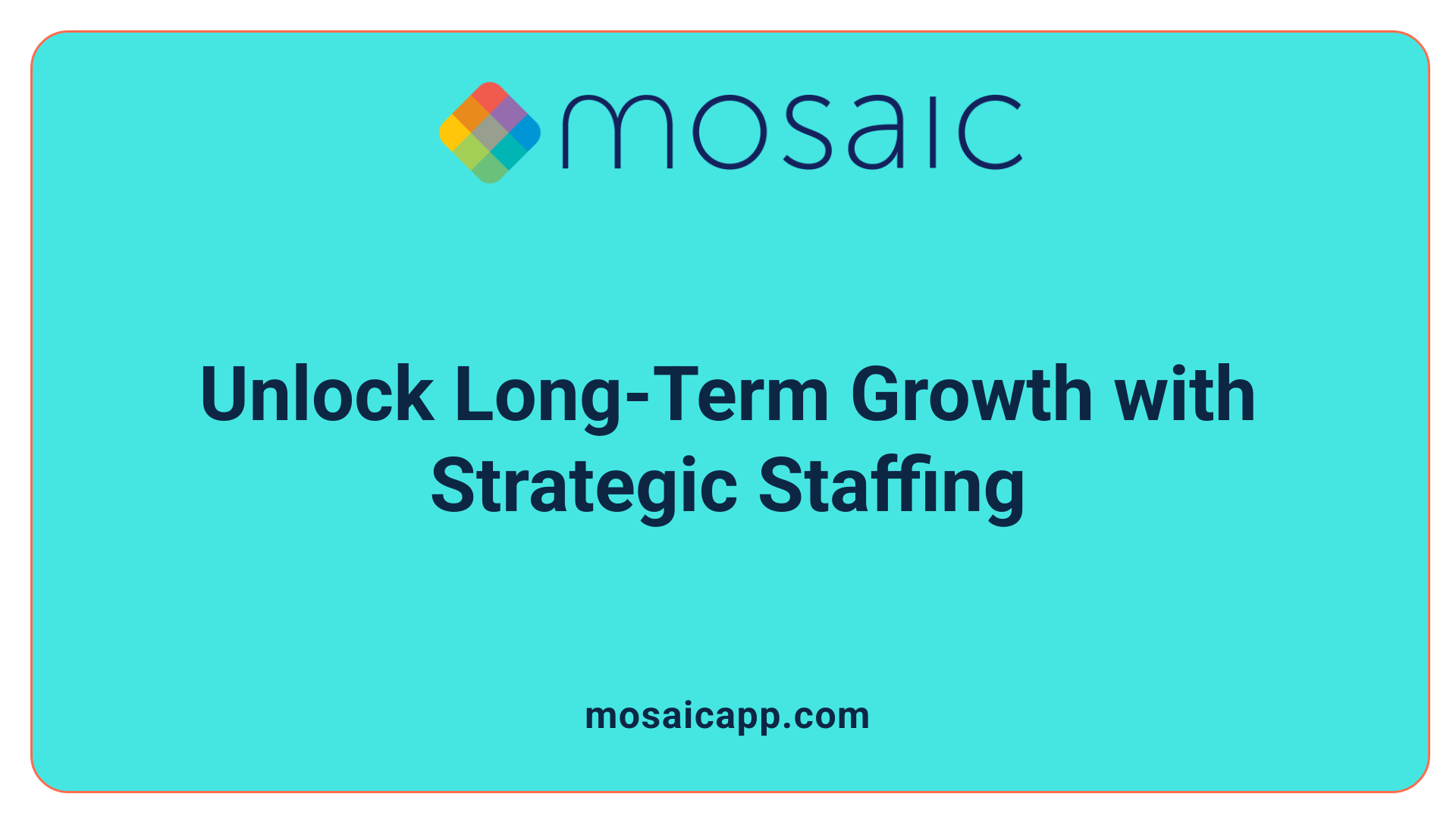
Why are professional staffing strategies crucial for long-term business success?
Implementing effective staffing strategies is vital for sustaining long-term growth and maintaining a competitive edge. These approaches allow organizations to connect with highly skilled, pre-vetted professionals quickly through staffing ai, which tend to have access to a broad talent pool, including passive candidates. This not only accelerates recruitment but also reduces associated costs and minimizes errors in hiring.
A well-designed staffing plan helps companies adapt to changing market conditions by providing workforce flexibility. Businesses can scale their workforce up or down without the burden of long-term commitments, making it easier to respond swiftly to industry shifts, technological advancements, or economic fluctuations.
Filling skill gaps, especially in niche sectors like technology, healthcare, or engineering, becomes more manageable with tailored staffing strategies. Engaging specialists through temporary or project-based roles ensures the availability of expertise without the need for permanent hires, promoting innovation and organizational resilience.
Moreover, strategic staffing supports employee engagement and retention. By aligning talent acquisition with organizational goals, companies foster a motivated, competent workforce capable of adapting to future challenges.
In essence, these strategies underpin organizational agility and sustainability, enabling businesses to thrive in an increasingly competitive landscape. They promote a culture of continuous improvement and innovation, positioning organizations for long-term success.
Core Components and Best Practices for Effective Project Staffing Infrastructure
What are the components and best practices of building a strong and effective project staffing infrastructure?
Creating a reliable project staffing setup involves several vital elements. First, implementing a comprehensive portfolio management system helps oversee all project resources and align staffing with organizational objectives. Clear definition of roles and responsibilities across the team ensures everyone understands their tasks, reducing confusion and enhancing accountability.
Performance management mechanisms are essential for monitoring progress and addressing issues proactively. Regular evaluations help maintain high standards and adapt staffing as needed. Conducting workforce assessments and skill gap analysis allows organizations to identify existing talent strengths and areas where new skills are required, guiding targeted hiring or upskilling.
Strategic partnerships with staffing ai provide access to specialized talent quickly, which is especially important in dynamic project environments. Using sophisticated project management software facilitates coordination, allows real-time tracking, and improves communication among team members.
Meticulous planning and scheduling are crucial to match staffing levels with project demands, preventing overstaffing or under-resourcing. Flexibility and stakeholder engagement allow the project team to adapt to unforeseen challenges, while continuous improvement ensures the staffing strategy evolves with project needs.
Combining these components with best practices like maintaining open communication, leveraging technological tools, and fostering an adaptable culture results in an efficient, resilient staffing infrastructure. This foundation supports successful project delivery, minimizes risks, and maximizes resource utilization, ultimately fostering project success in a competitive environment.
Impact of Smarter Staffing on Team Performance and Retention
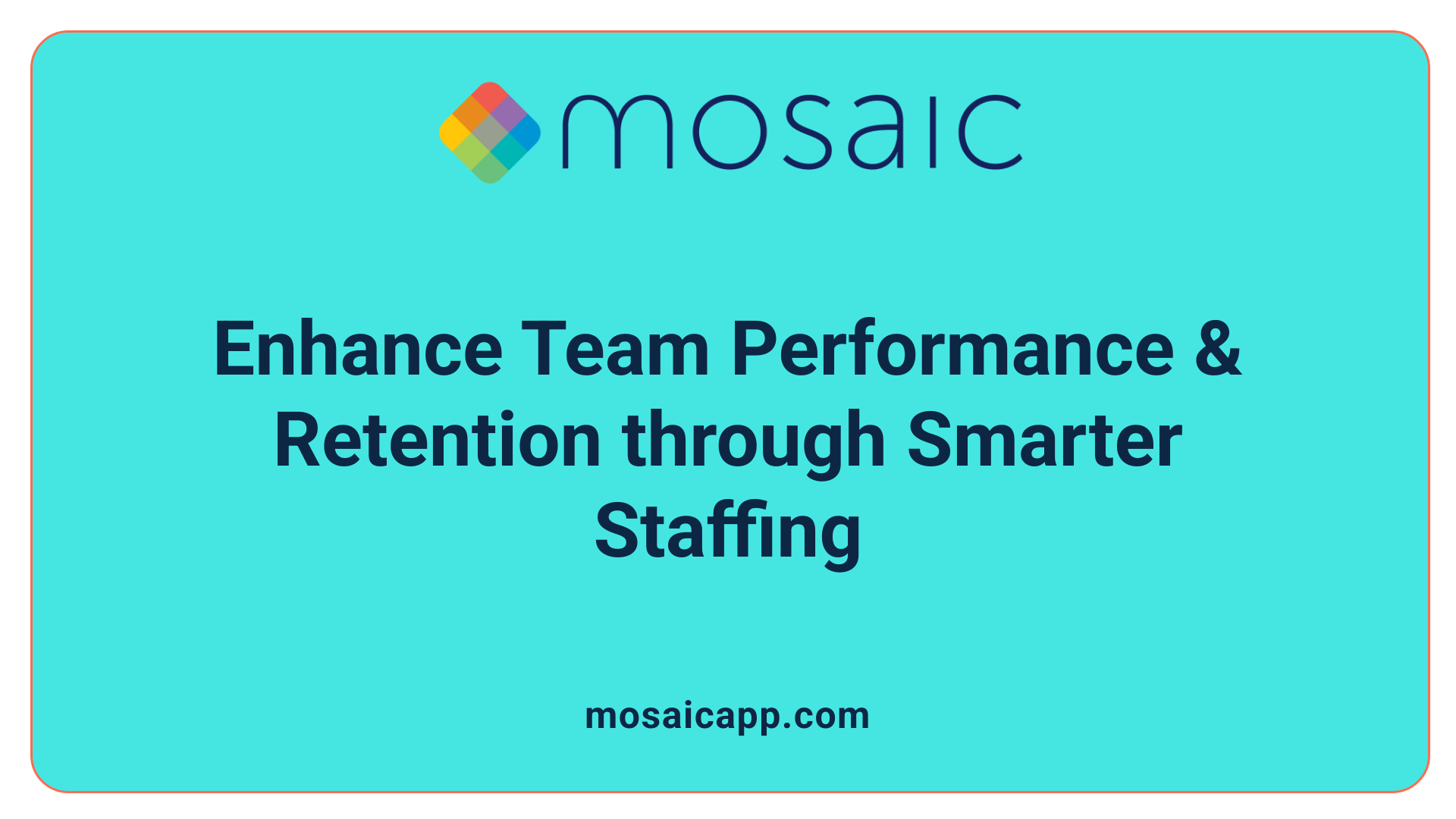
How do smarter staffing approaches enhance team performance and reduce employee turnover?
Implementing smarter staffing strategies significantly boosts team performance and diminishes employee turnover. A crucial aspect is matching talent to roles through well-planned, strategic recruitment processes. By carefully assessing skills and aligning them with specific project or business needs, companies foster higher job satisfaction and engagement.
Flexible work arrangements, particularly remote work and hybrid models, enhance work-life balance. These options are especially valuable in today’s digital-first environment, encouraging top talent to stay and perform at their best. Streamlined hiring processes, supported by new tools and ongoing employee support, contribute to a more positive onboarding experience, promoting faster integration and loyalty.
Ensuring legal compliance while creating a supportive, inclusive work environment helps build trust and stability within the team. Employee referral programs and internal opportunities for growth further motivate staff by cultivating a sense of community and upward mobility.
The combined effect of these practices is reflected in higher levels of engagement and performance. Employees who feel valued and supported are more committed, leading to improved productivity.
Furthermore, reducing employee turnover through targeted staffing and retention strategies cuts costs related to recruiting and training new hires. Over time, these approaches result in a resilient, motivated workforce dedicated to achieving organizational goals.
Strategy Impact Additional Benefits Strategic recruitment Better role fit, higher satisfaction Lower turnover, improved performance Flexible work arrangements Increased retention, work-life balance Candidate attraction, competitive advantage Streamlined hiring processes Faster onboarding, engagement Cost savings, reduced vacancy periods Supportive work environment Loyalty, commitment Higher productivity, lower absenteeism Employee growth opportunities Motivation, internal talent development Reduces external hiring needs, enhances skills
Adopting these modern staffing practices ensures organizations maintain a strong, dedicated workforce capable of adapting to changing demands while fostering ongoing success.
Temporary Staffing Solutions: Justifications and Business Scenarios
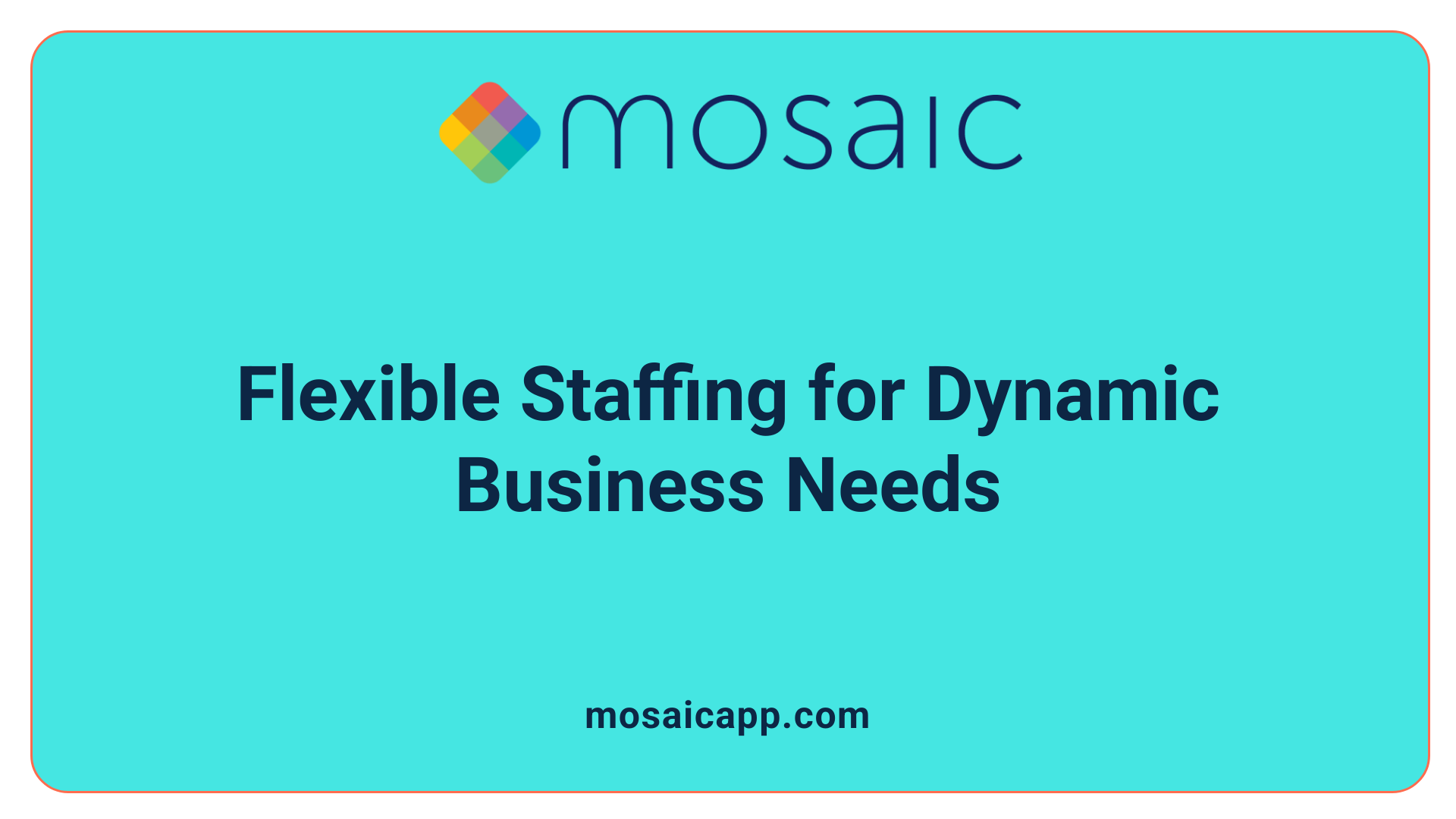
Managing seasonal fluctuations
Many businesses experience predictable surges and dips in workload across different seasons. Retailers, for example, often need additional staff during holiday shopping periods. Temporary staffing allows organizations to quickly scale their workforce without the long-term commitment of permanent hires, ensuring they can meet customer demand while controlling costs.
Short-term projects and crisis response
Organizations often undertake projects that have a defined timeline, such as launching a new product or upgrading IT infrastructure. Temporary staff with specialized skills can be onboarded swiftly to support these initiatives. In crisis situations like sudden market changes or technical failures, short-term staffing provides a rapid response to maintain operations.
Addressing staff absences and workload spikes
Unexpected absences due to illness, maternity leave, or other personal reasons can strain existing teams. Temporary workers fill these gaps, ensuring continuity of work. Similarly, workload spikes during peak periods enable organizations to meet deadlines without overburdening permanent staff.
Testing candidates before permanent hiring
Temporary staffing serves as a trial period for potential full-time employees. This approach helps employers evaluate the skills, work ethic, and cultural fit of candidates before making long-term commitments, reducing hiring risks.
Managing industry-specific talent shortages
In sectors like healthcare, IT, or engineering, skilled professionals can be scarce. Temporary staffing provides access to niche expertise quickly, filling critical gaps until permanent solutions are found or the market stabilizes.
Supporting project-based initiatives and transitions
During organizational changes or project launches, temporary staff support specific tasks and help manage transitions smoothly. For example, during company mergers or system overhauls, outsourced professionals ensure the process is seamless.
Facilitating organizational agility in uncertain times
Economic or market uncertainties often require quick adjustments to workforce size. Temporary staffing offers flexibility, allowing companies to ramp up or down efficiently without the complications of hiring or layoffs.
Scenario Description Benefits Seasonal fluctuations Demand varies predictably Cost-effective, scalable workforce Short-term projects Defined timeline initiatives Specialized skills on demand Staff absences Unexpected leave Uninterrupted operations Talent testing Assessing potential hires Reduce hiring risks Industry talent shortages Niche skill gaps Rapid access to experts Organizational transitions Mergers, upgrades Support during change Economic uncertainty Volatile market conditions Business flexibility
In today’s competitive landscape, temporary staffing stands out as a strategic approach that helps organizations remain agile, responsive, and resilient. It ensures that businesses can meet goals without the burden of long-term commitments, making it an invaluable tool for navigating dynamic market conditions.
Harnessing the Power of a Smarter Staff Backbone
A resilient, adaptable, and innovative project staffing infrastructure forms the backbone of long-lasting business success. By integrating advanced methodologies, flexible staffing options, and professional partnerships, organizations can not only improve project outcomes but also cultivate a workforce capable of responding to dynamic industry demands. Embracing smarter staffing approaches ensures continuous growth, operational resilience, and a competitive edge in today’s complex market landscape.
References
- Everything You Need to Know About Project Staffing
- Why Staff and Solutions Are the Backbone of Business ...
- Why Temporary Staffing Is the Backbone of Agile Workforces
- When Does It Make Sense to Use Temporary Staffing?
- Why Professional Staffing is the Backbone of Long-Term ...
- What Are the Benefits of Using Project Management ... - Dart AI
- Why Temporary Staffing Is the Backbone of Agile Workforces
- IT Staffing: The Backbone of Modern Business
- Infrastructure Project Management 101
- Project Management Infrastructure | PMI
